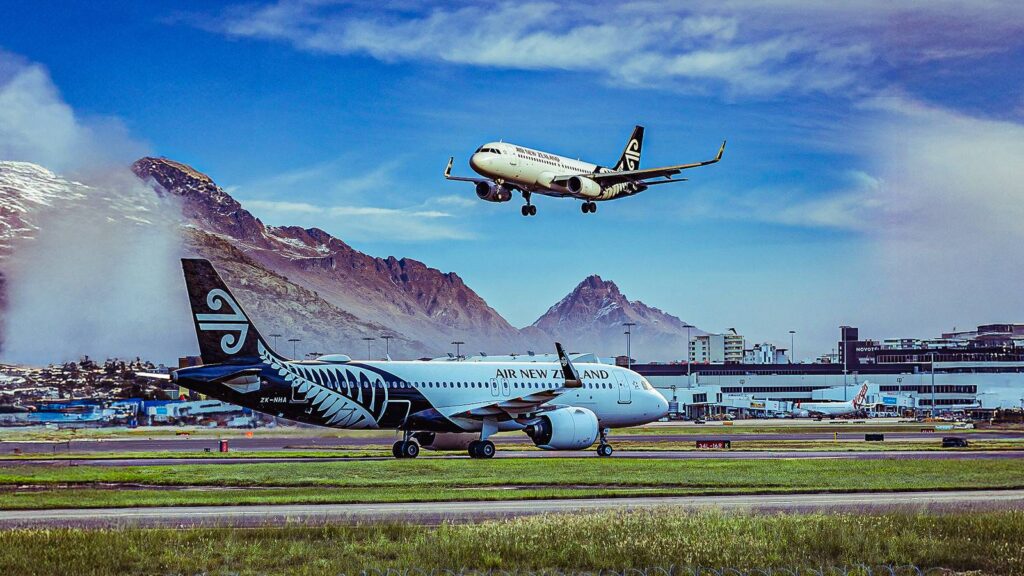
A scheduled Air New Zealand flight between Christchurch and Sydney was forced to make an emergency landing on Friday, October 24, after experiencing a hydraulic failure mid-flight. The Airbus A320neo, operating as flight NZ211, encountered the issue while halfway across the Tasman Sea, prompting an immediate response from emergency services at Sydney Kingsford Smith Airport (SYD).
As the aircraft approached Australia’s busiest airport, emergency crews were on standby, ready to assist upon its arrival. Fortunately, the plane landed safely and was met by both emergency personnel and an engineering team to assess the situation. A thorough inspection is now underway to ensure the aircraft’s safety before it returns to service.
Hydraulic Failure Over The Tasman Sea
The flight departed from Christchurch Airport (CHC) on October 24, initially scheduled to leave at 06:35 but eventually taking off at 06:56. With a block time of three hours and 35 minutes, the service was expected to arrive in Sydney at 08:15. However, the hydraulic failure was identified mid-flight, necessitating an emergency landing at SYD, where the aircraft touched down at 08:17.
Passengers onboard described the surreal experience, noting that everyone remained calm despite the unexpected situation. The aircraft remained stationary on the apron for up to two hours while engineers conducted assessments before it was towed to the gate. Nathan McGray, Air New Zealand’s Chief Safety and Risk Officer, commented on the incident:
“Emergency services met the aircraft on arrival as a precaution. The aircraft landed safely, and our engineering team will now carry out inspections to ensure the aircraft is safe to return to service.”
Notified Mid-Flight
The Airbus A320neo involved, registered as ZK-NHC, is a six-year-old aircraft with a capacity of 165 passengers in a single-class configuration. Passengers were informed of the technical issue mid-flight and briefed on emergency procedures. As of the time of writing, the aircraft remains at Sydney Airport, awaiting clearance to resume scheduled operations.
The incident led to the cancellation of the corresponding service between Sydney and Queenstown (NZ232). Affected passengers were rebooked on alternative routes via other Air New Zealand hubs, including Auckland Airport and Wellington Airport.
Data from ch-aviation reveals that ZK-NHC was delivered to Air New Zealand in March 2019, configured for short-haul international operations with seat-back entertainment screens. Passengers on these flights can choose from three fare types: seat only, ‘The Works’ (including movies, meals, and baggage), and Works Flexi (offering additional flexibility).
Air New Zealand’s New Leadership
This incident coincides with a leadership change at Air New Zealand, as Nikhil Ravishankar steps into the role of Chief Executive Officer. Previously the airline’s Chief Digital Officer, Ravishankar has been instrumental in advancing the carrier’s digital initiatives since joining in 2021.
In his first month, Ravishankar has suggested to Radio New Zealand that the airline may need to consider situational subsidies to maintain its full network of domestic routes amidst economic challenges. Earlier this year, the airline canceled its Wellington to Invercargill route due to financial pressures. Ravishankar highlighted ongoing concerns about the rising costs of jet fuel, wages, and other operational expenses, which have contributed to increased airfares for New Zealanders.
To counter these challenges, Air New Zealand is exploring options such as variable redemption, where discounted flights might exclude airpoints accumulation, and increasing domestic flights during off-peak times. The airline, which is 51% owned by the New Zealand Government, is projected to report a first-half loss of up to $31 million (NZ$55 million), attributed to lower passenger numbers and higher costs.
As the airline navigates these turbulent times, the safe landing of flight NZ211 serves as a reminder of the importance of rigorous safety protocols and the resilience of both crew and passengers in the face of unexpected challenges.





